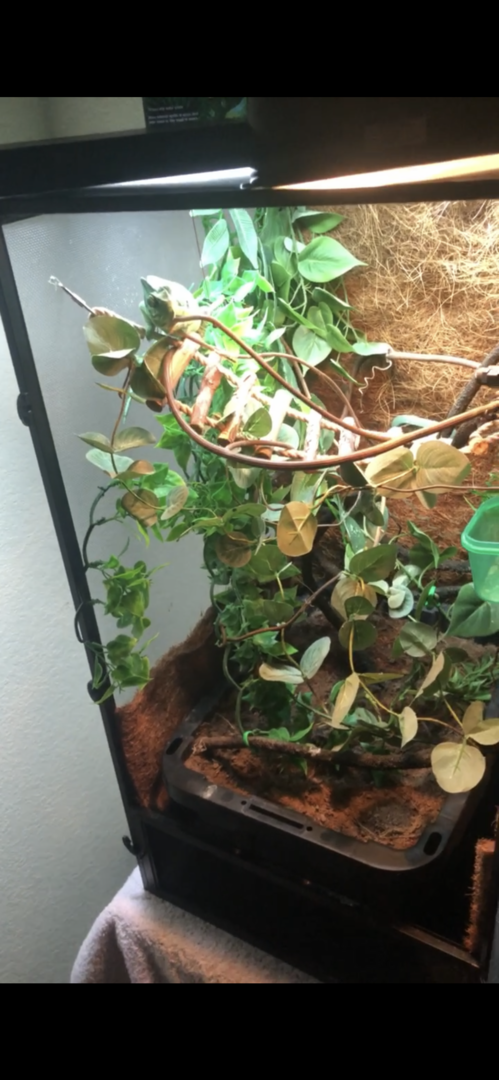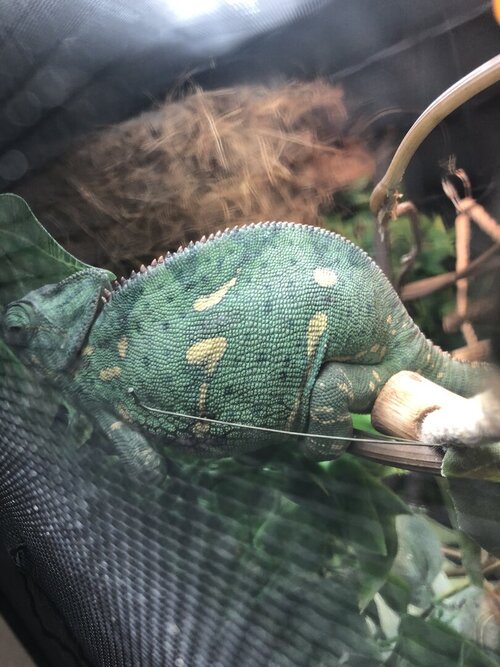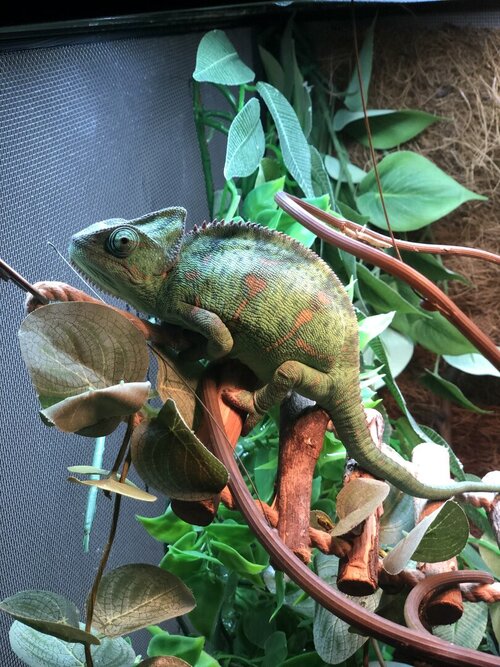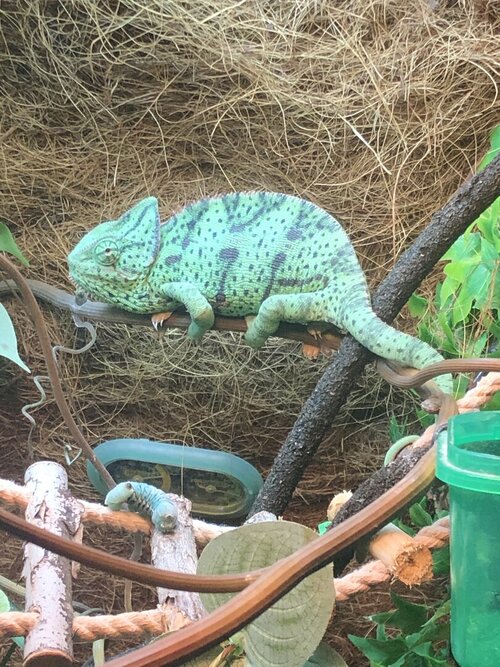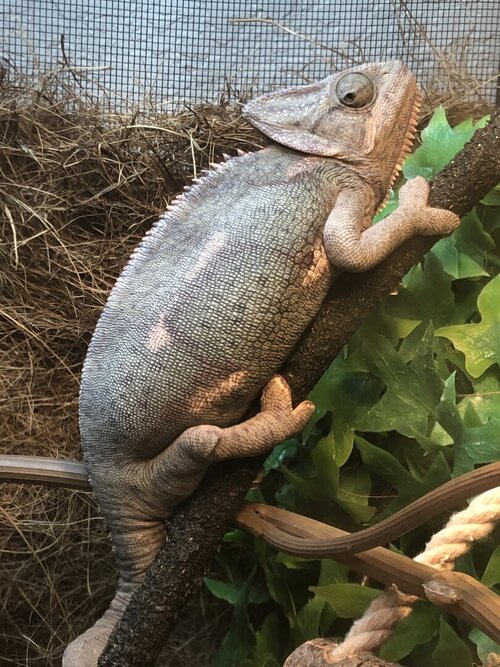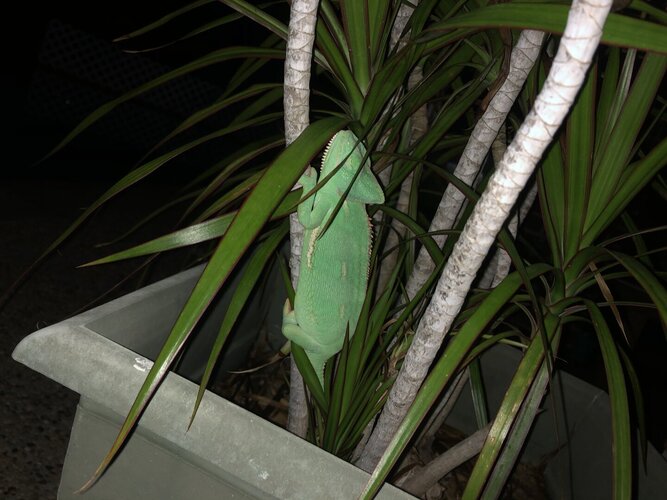Boba_The_Cham
New Member
Hey everybody,
First of all, here is background, setup, and feeding regimen:
Now to the real reason I am posting this thread! lol So just these past few weeks my veiled has been showing very vivid colors. I knew at some point she was going to become receptive so I have always had the laying bin inside the enclosure and documented her color changes. However, now she no longer is receptive and has NEVER shown any interest in digging or searching for a place to lay her eggs. I even covered her enclosure and only checked on her when feeding for a full week and she not once (that I noticed) went down to her laying bin. As you could assume, I of course am now terrified that she may be egg bound OR soon will be. For all of this week she has shown very dark (or what I would assume to be gravid colors) and still no sign of needing to lay. I will attach photos of my enclosure, her resting colors, receptive/questionable colors, and current colors for better understanding.
I guess I have resorted to this thread to see if anyone has had this happen before, or maybe insight into how I should handle the situation.
For clarification, she has never shown any serious sign of MBD or health issues to my knowledge, and her initial fecal test came out negative for parasites.
Let me know what you guys think!!
First of all, here is background, setup, and feeding regimen:
- Cham INFO: Veiled chameleon (female), 10-11 months old, and has been in my care for roughly 7 months
- Handling: Once a week I handle and put her outside for a few hours ( weather permitting)
- Location: Houston, Texas so weather is typically perfect for humidity and heat levels
- Feeding/Supplements:
- Feeding: 2-3 feeder per day (size dependent) currently trying to cut back
- Feeders: Mixture of Dubia (medium), soldier Flies & larvae, superworms, occasional hornworms for hydration and wax worm or moths for a treat.
- Supplements: All feeders are lightly dusted with Rep-Cal (NO PHOS/D3) daily
- Reptivite on Sundays
- Rep-Cal (PHOS/D3) on Saturdays
- Cage Info:
- 18" x 18" x 36" screened cage with T5 high output Reptisun UVB buld and Heat Bulb.
- Temps and Humidity: 82 F and consistent 50% humidity during day (70% at night)
- Automatic Mister (every 4 hrs) and dripper
- Laying bin: (16" x 12" x 10") with mixture of play sand and peat moss. It holds mold and allows for proper digging.
- Cocofiber siding: I use this to help retain humidity levels in the enclosure.
- Currently No real Plants: This will change soon. I currently am in a process of moving for a new job.
- 18" x 18" x 36" screened cage with T5 high output Reptisun UVB buld and Heat Bulb.
Now to the real reason I am posting this thread! lol So just these past few weeks my veiled has been showing very vivid colors. I knew at some point she was going to become receptive so I have always had the laying bin inside the enclosure and documented her color changes. However, now she no longer is receptive and has NEVER shown any interest in digging or searching for a place to lay her eggs. I even covered her enclosure and only checked on her when feeding for a full week and she not once (that I noticed) went down to her laying bin. As you could assume, I of course am now terrified that she may be egg bound OR soon will be. For all of this week she has shown very dark (or what I would assume to be gravid colors) and still no sign of needing to lay. I will attach photos of my enclosure, her resting colors, receptive/questionable colors, and current colors for better understanding.
I guess I have resorted to this thread to see if anyone has had this happen before, or maybe insight into how I should handle the situation.
For clarification, she has never shown any serious sign of MBD or health issues to my knowledge, and her initial fecal test came out negative for parasites.
Let me know what you guys think!!

